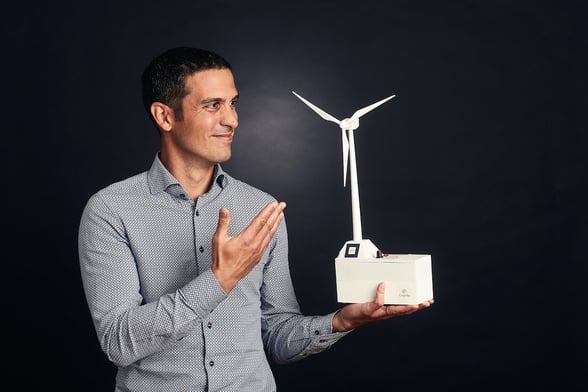
As a European, I’ve always looked to America with admiration. To me it was a country of adventure and bold advances into the future. From the first man on the moon to the technology explosion in Silicon Valley, it has been the epicenter of invention for decades. One year ago, I relocated to the US, to run the North American division of Norway-based Cognite, and I’ve experienced firsthand the energy, enthusiasm and burn for innovation that runs strong here. But my immersion in all things American has also opened my eyes to some of the differences between Europe and the US, particularly when it comes to transforming the 160-year-old oil and gas industry.
Europe has sounded the alarm
Europe has successfully started on a long journey of activation, legislation and motivation among its citizens, corporations and governments, who have been called to action to combat the warming of our planet. European oil and gas companies have faced growing political pressure, increasing regulation, harsher public opinion, as well as greater incentives to take action. This mounting campaign for change has placed the continent firmly at the forefront of the industry’s transformation. On top of that, the investor community is adding a new kind of pressure, through greater environmental, social and governance (ESG) commitments. This isn’t only happening in Europe. Even major players such as US-based Blackrock are doubling down on responsible investments.
While there are positive signs from the financial community, I simply don’t feel the same sense of urgency in the US to transform oil and gas. Perhaps this lack of urgency stems from the absence of public- and government pressure and the failure to implement more demanding industry regulation. Or perhaps it’s due to the lack of incentives to change. Certainly in the short- and mid-term, renewables will present lower return capital and tighter margins. But American history tells us that some of the greatest advances come as a response to a greater need and longer-range foresight. Individuals and businesses who sensed the urgency, before the policymakers and in spite of short-term opportunity costs, took bets and made bold moves. That to me is what has defined America, and it’s what I believe can happen in the US oil and gas industry.
The time for delays and excuses is over. Here are three things that need to happen in the US oil and gas industry in order to be future-ready.
1. The energy transition is just a matter of time, so don’t waste yours by delaying the move to renewables. Pay special attention to offshore wind.
Most of the European oil and gas companies today are exploring the renewables space as a potential future. They are quickly discovering that their infrastructure has value in the offshore wind game in particular, making this business extension an easier investment to swallow on a longer time horizon. Their current engineering, product and project organization competencies have primed them for an eventual expansion into offshore wind, and for some, perhaps a first step on the way to becoming full scale energy companies.
2. Embrace digitalization. It's the only way that you can reform your operations and reduce your emissions quickly and efficiently.
It’s become the responsibility of every oil and gas company to seek ways to reduce emissions. There are powerful tools available today that help with this, extracting insights from the data that stems from the billions of data points collected across a company’s infrastructure. This data can tell you where you are suffering energy losses, for example, and how it can then be remedied. By using the data in this way, Cognite estimates that there is potential to reduce energy consumption by 10%, a reduction of more than 13 billion kilograms of CO2 per year. This savings alone will enable operators to fulfil their emissions reduction goals within the decade.
3. There's nowhere to hide in this day and age. It's time to lay all the facts on the table and be ready to benchmark your operations.
It is unavoidable that oil & gas operators will face increased scrutiny, even in my own state of Texas regulators are starting to demand more transparency and strengthening regulations. The only way to win in this new transparent climate will be to be ahead of the regulations, always in complete control over all aspects of operations. This will require regular reporting on carbon emissions, measures taken to reduce climate impact, as well as how the company is working to improve health and safety. I see more and more oil and gas companies reporting on these themes. An added bonus to reporting is that it often forces you to confront the actual data and seek ways to improve through stricter efficiency measures, lending further credence to the adage long attributed to Peter Drucker, “If you can’t measure it, you can’t improve it.”
The time for soul-searching is over. This is your call to action.
These changes will not happen overnight. They require a clear decision from the top and a company-wide focus on using technology and data to transform. Europe may have been pushed towards this goal a bit earlier in the game, but with the US’s history of revolutionary and rapid change, I have no doubt that the biggest transformations of all will take place right here in America, the epicenter of innovation.